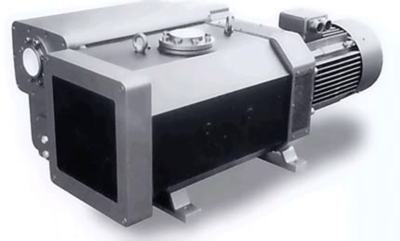In industrial or government facilities that need to pump water from one level to another, one of the essential pieces of equipment that you will find is a vacuum priming system. These systems work in conjunction with centrifugal pumps to transport water (or another liquid) from point A to point B. However, the problem with these centrifugal pumps is that while they are quite efficient in pumping liquid, they are unable to pump air. That means that when the pumps are taken offline for maintenance or some other reason, they need to be filled with liquid again before they will operate properly. And that is where the vacuum priming system comes in.
The vacuum priming system is used to pull water into the pump, which then allows the pump to start. It does this by creating a vacuum that extends from the top of the impeller right down to the water level of the reservoir from which the liquid is being pumped. As the vacuum removes air molecules from the pump, water is pushed up into it.
At the highest point of the priming system, you will find a priming valve. And while there are many types of priming valves, the most commonly used type uses a float to turn off the vacuum system once the water gets high enough to raise the float. This helps to ensure that water does not get inside the vacuum pump. When a sufficient amount of liquid has been pulled into the centrifugal pump, a sensor alerts the pump operator that the pump has been primed and that it is now safe to turn on the water pump drive motor.
What features does a vacuum priming pump have?
Vacuum priming systems have come a long way over the years. Many years ago, you might have found rusty and leaky pieces of equipment that had to rely on liquid ring systems.
 Today, however, vacuum priming systems use oil-lubricated rotary vane pumps, which are considerably more energy-efficient and result in less water wastage than their older counterparts. And with a modern control panel, the pump operator is able to select precise settings depending on what is needed.
Today, however, vacuum priming systems use oil-lubricated rotary vane pumps, which are considerably more energy-efficient and result in less water wastage than their older counterparts. And with a modern control panel, the pump operator is able to select precise settings depending on what is needed.
Safety features are incorporated into the system to help prevent the motors from overheating as well as to drain the pump from excess moisture that may find its way back into the vacuum receiver vessel.
Selecting a vacuum priming system
When selecting the right vacuum priming system for your facility, it is necessary to consider both the height that you need to raise the liquid as well as the speed at which you need to raise it. This is typically determined by the pumping speed of each unit which is measured according to cubic feet capacity per minute. Your vacuum pump technician will be able to advise you on the right priming system to meet your specific needs.
Contact PFS Pumps today.
If you require new vacuum priming systems for your facility, or if you require maintenance on systems that you already have, we can help. Contact us today to speak with one of our specialists.
